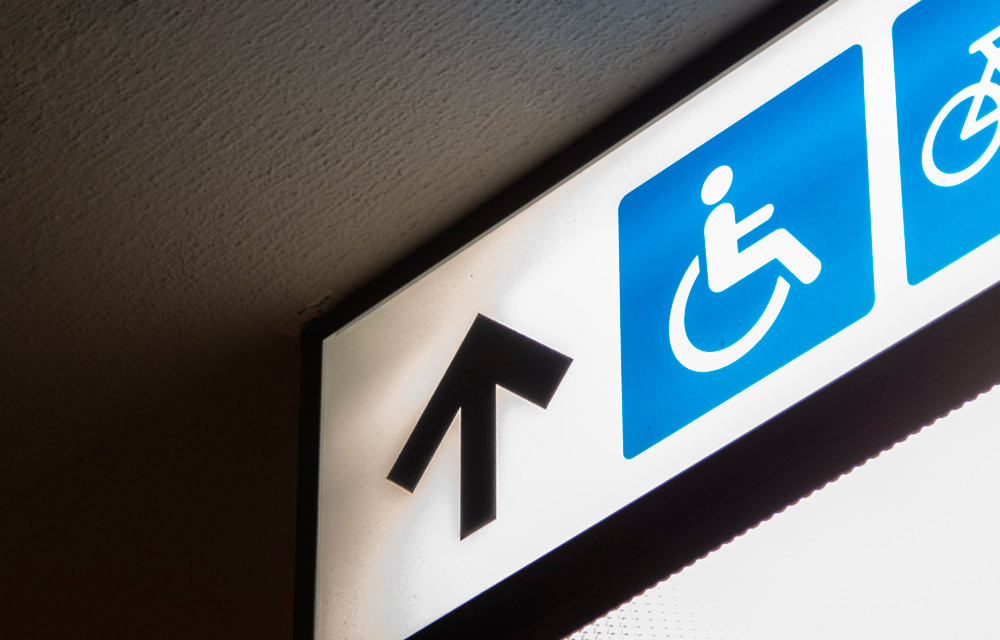13.3 million English people live with a disability 1. You may not know this – as many disabilities are not visible – but it is very likely that disabled persons attend the events you organise. Actually, many may not even attend your events because they don’t know whether they will be able to easily access the event and enjoy the moment without difficulty. Worse still, they may have had a poor experience at one of your events and don’t want to attend another ever again.
Making your event more accessible is also a way to attract a new audience, who will have a different outlook on your event’s themes and process. So, here are some tips to offer everyone the same opportunities to mingle, share and have fun at your events.
Contents
- Boost your event’s accessibility
- Communicate about accessibility features
- Write an accessible description
- Make registration easy
1. Boost your event’s accessibility
Making an event accessible is more than a simple requirement, it must be a desire and a priority on your part. Creating an inclusive environment is not just about putting access ramps in place. Organising an event that is accessible to persons with reduced mobility (PRMs) means that you must be attentive to the small details that make everyone feel welcome.
However, start at the beginning and ensure that you comply with the rules set by the Equality Act. This is the minimum you have to do, and most venues used to receiving the public are compliant. Still, we recommend that you take a look at the venue beforehand to make sure everything is in order.
Signage is very important. Accessible entrances and adapted toilets must be visible from a low point of view, for people using a wheelchair. And for the visually impaired, these signs must be large enough and use contrasting colours.
Make sure that the layout of the venue provides enough space for wheelchairs-users and all other attendees to move around and mingle.
Don’t neglect all other forms of disabilities, such as allergies to certain types of food. Peanut allergies, for example, should not be taken lightly. Avoid serving it or indicate very clearly when a dish contains it. These are the kinds of details that will make your event accessible to everyone.
2. Communicate about accessibility features
Don’t just announce that your event is accessible but explain clearly how it is so. This will reassure the people concerned so that they can make the decision to attend your event with as much information as possible. We recommend that you give details on the means used to make your event inclusive in your event’s description and on your communication materials.
For example, describe accessible entrances, mention wheelchair spaces, etc. Parking is also very important. Is there enough space for PRMs? How many in total?
A detailed description of your event’s accessibility will help people make a decision before registering or purchasing a ticket. It also shows the sincerity of your efforts.
3. Write an accessible description
Your event’s accessibility also includes your website or Weezevent minisite. Online accessibility is generally underestimated compared to on-site accessibility. Your event can be the most accessible in the universe on site, something is still missing if the relevant people are not informed.
A few easy actions can make your online event more accessible:
- Use descriptions for each image, for people using screen reader technology.
- Add a text transcription of each video posted on your website or on your YouTube channel, for the reasons mentioned above and for hearing impaired people.
- Increase the contrast of the text on your web pages, for visually impaired people – including the elderly.
Some web designers specialise in accessible and inclusive design.
4. Make registration easy
The registration process is the most important part of an event attendee’s online experience. Indeed, it is the part that includes payment, and therefore generates stress. If possible, we recommend you have the entire registration process tested by several people around you to identify any issues.
Any delays or difficulties in understanding how to complete the form will frustrate your potential participants. And if the form contains too many questions, users of assistive technology can simply give up on completing the registration. So, make sure you create a short but comprehensive form.
Tip: Add a question to find out about any potential disability that people registering for your event may have. This will show your willingness to organise an event that is accessible to everyone and will help you plan adjustments for reported disabilities.
Making a real effort to create a pleasant experience for people who need accessibility features will make them feel fully included – not just allowed to participate in your event. In addition, it will be well received by all your attendees, in addition to the PRMs. You can’t imagine all the positive effects this can create!
Convinced? Get started on your first event or its next edition now! With an easy-to-use all-in-one ticketing tool, save time on setting up accessibility features. Discover all the features of Weezevent by clicking below:
